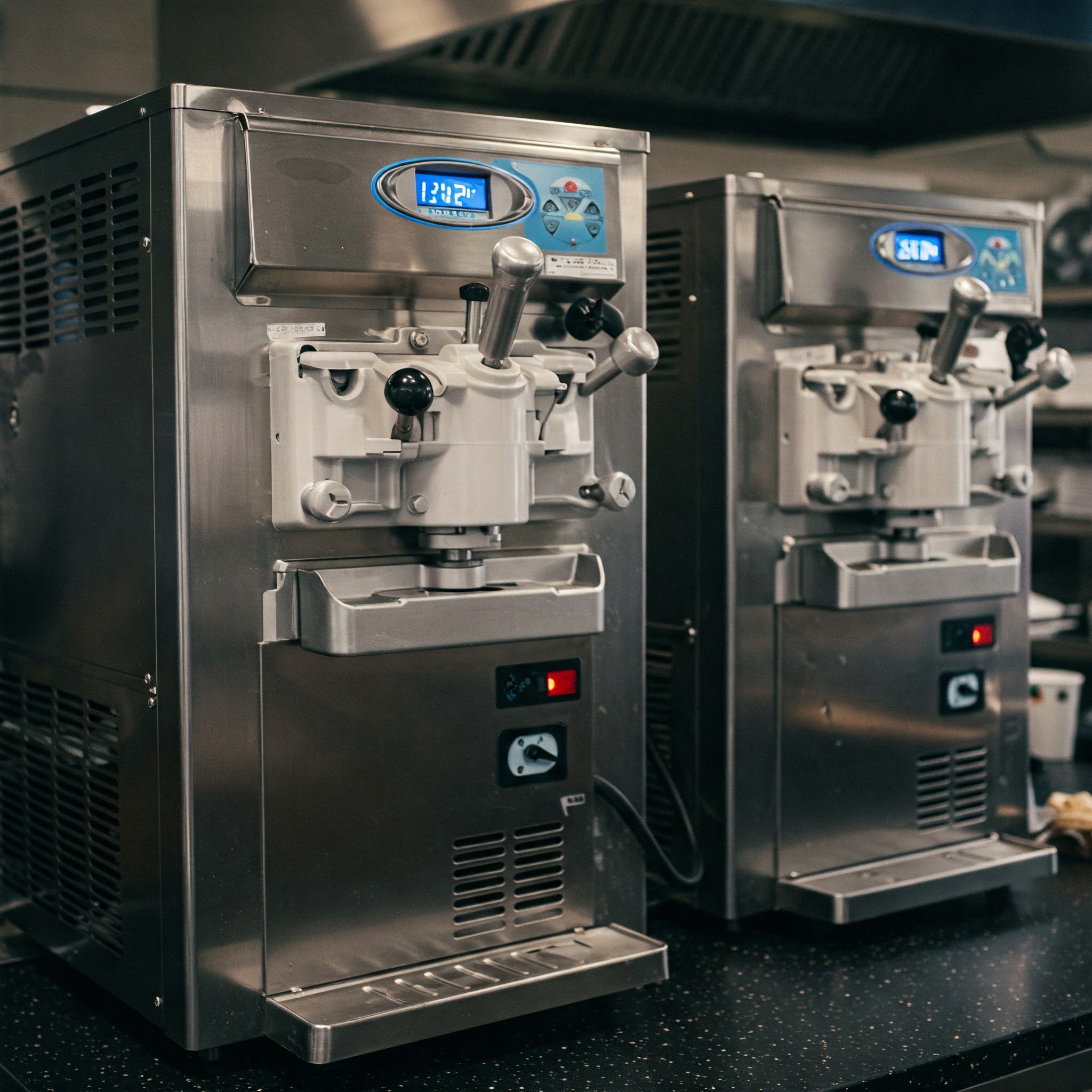Ice Cream Machines: The Ultimate Guide to Making Frozen Treats
Ice cream machines are essential appliances for creating smooth, creamy, and delicious frozen desserts. Whether for home use, small businesses, or large-scale commercial operations, choosing the right ice cream machine can make a significant difference in product quality and efficiency.
From soft serve to gelato, frozen yogurt, and traditional hard ice cream, there are various types of ice cream machines designed for different production needs.
What Are Ice Cream Machines?
Ice cream machines are specialized appliances designed to freeze and churn ice cream mixtures while incorporating air for a creamy texture. They maintain the right consistency by controlling freezing speed and mixing intensity, ensuring a smooth, high-quality final product.
They are commonly used in:
- Ice cream parlors – For making fresh, high-volume frozen treats.
- Restaurants and cafés – To offer ice cream, gelato, or frozen yogurt as a dessert option.
- Supermarkets – For producing and selling pre-packed ice cream.
- Homes – For individuals who enjoy homemade ice cream.
Types of Ice Cream Machines
1. Soft Serve Ice Cream Machines
- Description: Machines designed to produce soft, smooth ice cream with a light texture.
- Best For: Ice cream shops, fast-food restaurants, and dessert kiosks.
- Example Items: Soft serve ice cream, frozen yogurt, custard.
- Advantages:
- Quick and efficient production.
- Produces light, airy ice cream with a creamy texture.
- Often includes dual hoppers for multiple flavors.
2. Batch Freezer Ice Cream Machines
- Description: High-capacity machines that freeze and churn ice cream in set batches.
- Best For: Large-scale production, specialty ice cream parlors, and gelato shops.
- Example Items: Traditional hard ice cream, gelato, sorbet.
- Advantages:
- Produces large quantities per batch.
- Allows for control over texture and density.
- Ideal for custom or artisanal ice cream recipes.
3. Countertop Ice Cream Machines
- Description: Compact machines designed for small-scale production.
- Best For: Cafés, restaurants, and home users.
- Example Items: Small batches of ice cream, gelato, or sorbet.
- Advantages:
- Space-saving and easy to operate.
- Ideal for small businesses with limited counter space.
- Affordable compared to commercial machines.
4. Gelato Machines
- Description: Machines specifically designed to produce dense, rich, and smooth gelato.
- Best For: Gelato shops, dessert cafés, and fine-dining restaurants.
- Example Items: Italian-style gelato, frozen custards, premium ice creams.
- Advantages:
- Produces lower-air, high-density frozen desserts.
- Maintains a slightly warmer temperature than traditional ice cream machines.
- Allows for customizable flavor blending.
5. Commercial Ice Cream Machines
- Description: Heavy-duty machines used for continuous, large-scale ice cream production.
- Best For: Ice cream factories, large franchises, supermarkets.
- Example Items: High-volume ice cream, frozen novelties, packaged ice cream tubs.
- Advantages:
- High-speed, bulk production capability.
- Consistent texture and quality for mass distribution.
- Designed for continuous operation with minimal downtime.
6. Home Ice Cream Makers
- Description: Compact and user-friendly machines for making ice cream at home.
- Best For: Families, hobbyists, and small-batch dessert lovers.
- Example Items: Homemade ice cream, sorbet, and frozen yogurt.
- Advantages:
- Easy to use and clean.
- Allows full control over ingredients.
- Affordable and available in electric or manual models.
Key Features of Ice Cream Machines
- Production Capacity – Ranges from small-batch home use to high-capacity commercial production.
- Churning Speed – Affects texture, consistency, and freezing time.
- Built-in Freezing System – Some machines require pre-freezing, while others have built-in compressors for continuous production.
- Air Incorporation – Determines the creaminess and density of the ice cream.
- Flavor Dispensing Options – Some machines allow multiple flavors or mix-ins.
- Energy Efficiency – Many modern machines use eco-friendly refrigeration systems.
Applications of Ice Cream Machines
- Ice Cream Shops – To produce a variety of frozen treats.
- Restaurants and Cafés – To serve fresh, high-quality ice cream.
- Supermarkets and Grocery Stores – For pre-packed ice cream production.
- Catering Businesses – To provide customized frozen desserts.
- Home Use – For making fresh, preservative-free ice cream.
Benefits of Ice Cream Machines
- Customizable Flavors – Allows unique and creative recipe development.
- Fresh and High-Quality Ice Cream – Ensures a smoother, creamier texture than store-bought alternatives.
- Cost-Effective for Businesses – Reduces reliance on third-party suppliers.
- Versatility – Can produce gelato, sorbet, frozen yogurt, and more.
- Energy Efficient – Modern machines use low-power refrigeration systems.
Maintenance Tips for Ice Cream Machines
Daily Maintenance
- Clean the mixing chamber to prevent residue buildup.
- Check and sanitize dispensing nozzles (for soft serve machines).
- Ensure proper refrigeration settings for consistency.
Weekly Maintenance
- Inspect moving parts for wear and tear.
- Check the motor and compressor for efficiency.
- Deep clean all removable parts with food-safe sanitizers.
Monthly Maintenance
- Lubricate mechanical components if needed.
- Test temperature controls for accuracy.
- Clean condenser coils for better cooling efficiency.
Troubleshooting Common Issues
1. Ice Cream is Too Soft
- Cause: Insufficient freezing temperature.
- Solution: Adjust settings and check for refrigerant leaks.
2. Ice Cream is Too Hard
- Cause: Freezing temperature set too low.
- Solution: Raise temperature slightly for better consistency.
3. Machine is Not Freezing Properly
- Cause: Dirty condenser coils or malfunctioning compressor.
- Solution: Clean coils and inspect the cooling system.
4. Noisy Operation
- Cause: Loose components or worn-out motor.
- Solution: Tighten screws and replace damaged parts.
5. Ice Cream is Grainy or Icy
- Cause: Incorrect churning speed or overmixing.
- Solution: Adjust settings for a smoother texture.
Choosing the Right Ice Cream Machine
Factors to Consider:
- Type of Ice Cream – Soft serve, gelato, traditional, or sorbet.
- Production Volume – Small-batch machines for home use or large-scale commercial units.
- Space Availability – Countertop vs. freestanding models.
- Budget – Home ice cream makers are affordable, while commercial machines are an investment.
- Ease of Maintenance – Look for self-cleaning features or easy disassembly.


